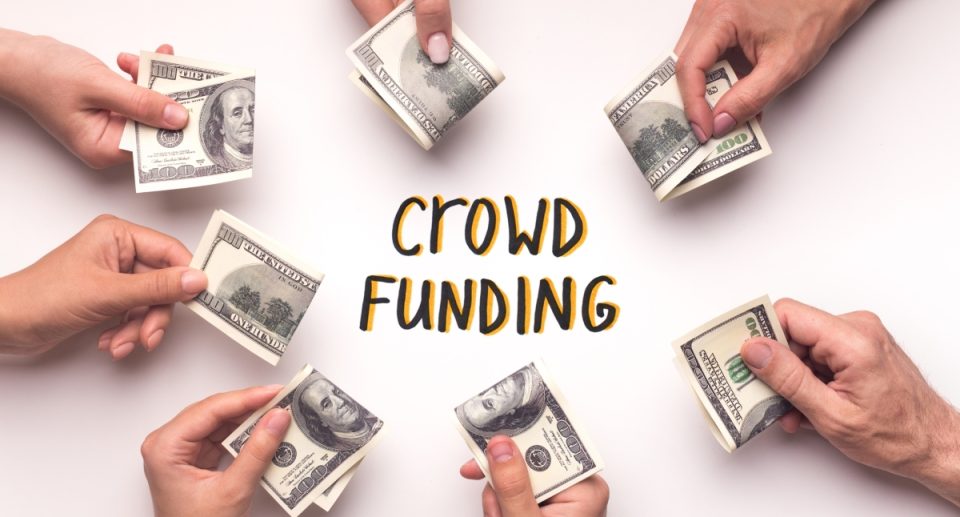Exploring Crowdfunding: How Seniors Can Launch Their Projects

In recent years, crowdfunding has emerged as a powerful tool that allows individuals to raise money for projects, ideas, and ventures directly from the public. This can be a particularly rewarding opportunity for seniors, providing a platform to turn passions into realities, support community initiatives, or even start a new business. This guide will explore how seniors can effectively utilize crowdfunding to launch their own projects, offering insights into the process, platforms, and strategies for success.
1. Understanding Crowdfunding
Crowdfunding is a method of raising funds from a large number of people, typically through online platforms. This approach democratizes funding, making it accessible to individuals who might not have traditional avenues for securing financial support.
A. Types of Crowdfunding
- Reward-Based Crowdfunding: Backers contribute to a project in exchange for rewards, such as products, services, or experiences. This model is popular for creative projects, product launches, and community initiatives.
- Equity Crowdfunding: Investors contribute money to a startup or project in exchange for shares or ownership stakes. This model is often used for business ventures seeking investors.
- Donation-Based Crowdfunding: People contribute funds to support a cause or project without expecting anything in return. This model is commonly used for charitable initiatives, medical expenses, or community projects.
- Debt Crowdfunding: Borrowers raise funds from individual lenders and repay them with interest over time. This model is suitable for individuals or businesses looking to secure loans.
B. Why Crowdfunding is Beneficial for Seniors
- Empowerment: Crowdfunding allows seniors to take control of their financial futures and pursue their passions.
- Community Engagement: It fosters a sense of community by allowing individuals to connect with others who share similar interests or goals.
- Validation of Ideas: Seniors can gauge interest in their projects before investing significant time or money by launching a crowdfunding campaign.
2. Identifying Your Project
Before diving into the crowdfunding process, it’s essential to clearly define your project and its objectives.
A. Define Your Project
- Passion Projects: Consider what you’re passionate about. Whether it’s a creative endeavor, a community service initiative, or a small business idea, identify the project that excites you.
- Social Impact: Think about how your project can benefit others or contribute to your community. Projects that address local needs often resonate well with potential backers.
B. Set Clear Goals
- Financial Goals: Determine how much money you need to launch your project. Be realistic and consider all associated costs, such as production, marketing, and platform fees.
- Timeline: Set a timeline for your project, including milestones for completion and fundraising goals. This helps create a sense of urgency and encourages potential backers to contribute.
3. Choosing the Right Crowdfunding Platform
Selecting the right platform is crucial for the success of your crowdfunding campaign. Each platform has its unique features, fees, and audience demographics.
A. Popular Crowdfunding Platforms
- Kickstarter: A leading platform for creative projects where backers receive rewards for their contributions. It operates on an all-or-nothing funding model, meaning you must meet your financial goal to receive funds.
- Indiegogo: Similar to Kickstarter, it offers more flexible funding options, allowing you to keep funds even if you don’t reach your goal. It supports various types of projects, including creative endeavors and entrepreneurial ventures.
- GoFundMe: This platform, which is primarily focused on donation-based crowdfunding, is ideal for personal causes, medical expenses, or community projects. There are no platform fees, making it accessible for many users.
- Patreon: Designed for creators and artists, Patreon allows you to receive ongoing support from patrons in exchange for exclusive content and rewards. It’s great for those looking to build a sustainable income.
B. Considerations for Choosing a Platform
- Fees: Review the platform’s fee structure, including transaction fees and whether they charge a percentage of funds raised.
- Audience: Consider the platform’s audience and whether it aligns with your project’s goals. Some platforms cater more to creative projects, while others focus on charitable causes.
- Ease of Use: Choose a user-friendly platform that provides resources to help you launch your campaign successfully.
4. Creating a Compelling Campaign
A successful crowdfunding campaign requires careful planning and compelling storytelling to engage potential backers.
A. Craft Your Story
- Personal Connection: Share your personal story and the inspiration behind your project. Authenticity resonates with backers and helps build a connection.
- Project Impact: Clearly articulate how your project will make a difference. Explain the benefits it will bring to your community or target audience.
B. Develop Engaging Visuals
- High-Quality Images and Videos: Use high-quality images and videos to showcase your project. A compelling video pitch can significantly increase engagement and support.
- Clear Call to Action: Encourage potential backers to contribute by including a clear call to action in your campaign. Let them know how they can help make your project a reality.
C. Set Reward Tiers
- Incentives for Backers: Offer rewards at various contribution levels to incentivize backers. These could range from thank-you notes to exclusive products or experiences related to your project.
- Value and Accessibility: Ensure that your rewards provide value to backers and are attainable for your project budget.
5. Promoting Your Campaign
Once your campaign is live, it’s essential to promote it effectively to reach your funding goals.
A. Leverage Social Media
- Share on Multiple Platforms: Use social media platforms such as Facebook, Twitter, Instagram, and LinkedIn to share your campaign and connect with potential backers.
- Engage with Your Audience: Regularly update your followers on your campaign’s progress, share behind-the-scenes content, and respond to comments and messages to build a community around your project.
B. Utilize Email Marketing
- Build an Email List: Reach out to family, friends, and colleagues to inform them about your campaign. Encourage them to share your project with their networks.
- Send Regular Updates: Keep your supporters informed by sending updates on your campaign’s progress and milestones achieved.
C. Collaborate with Influencers
- Partner with Influencers: Identify influencers or community leaders who resonate with your project and can help promote your campaign to their followers.
- Guest Blogging and Features: Consider guest blogging or being featured in local publications to reach a wider audience.
6. Managing Your Campaign
Successfully managing your crowdfunding campaign is crucial to building trust and maintaining momentum.
A. Communicate Regularly
- Updates and Progress Reports: Keep backers informed about your campaign’s progress through regular updates. Transparency builds trust and encourages continued support.
- Express Gratitude: Thank backers for their contributions and support publicly. Acknowledging their help fosters a sense of community and encourages future involvement.
B. Monitor Your Progress
- Track Funding and Engagement: Regularly monitor your campaign’s performance to understand what strategies are working and where adjustments may be needed.
- Adapt Strategies: If certain promotional efforts aren’t yielding results, be willing to adapt your strategies to improve engagement and funding.
7. After the Campaign: Fulfilling Your Promises
Successfully funding your project is just the beginning. It’s essential to follow through on your commitments to backers and maintain the trust you’ve built.
A. Deliver on Rewards
- Timely Fulfillment: Ensure that you deliver rewards to backers as promised, adhering to the timeline you established in your campaign.
- Communicate Progress: Keep backers updated on the status of their rewards and any potential delays. Transparency is key to maintaining trust.
B. Share Your Journey
- Document Your Project’s Progress: Continue to share updates about your project’s development, showcasing how their support has made a difference.
- Engage Your Community: Foster ongoing engagement with your supporters by sharing insights, lessons learned, and future goals.
Conclusion
Crowdfunding offers seniors an exciting opportunity to turn their passions and ideas into reality. By understanding the process, identifying your project, choosing the right platform, and effectively promoting your campaign, you can successfully launch your own initiative and engage with a supportive community. Embrace the journey of crowdfunding, and you may discover not only financial support but also a network of individuals eager to help you succeed. Start planning your project today and unlock the potential of your ideas!





